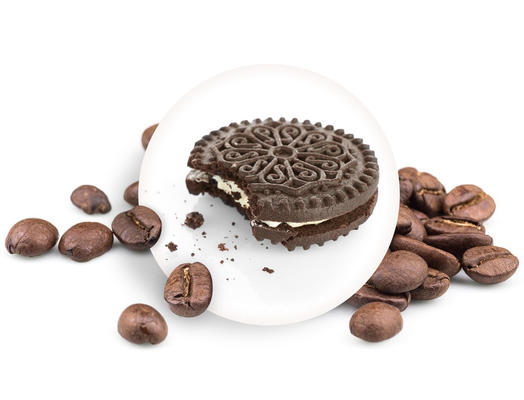cinibeans
BREADED COFFEE - coffee beans
BREADED COFFEE - coffee beans
Couldn't load pickup availability
Chocolate and milk, black and white. The best flavour and colour combination for those who love filled biscuits. If a little crunchy, you can immediately pair it with delicious milk and sweet aromatic cocoa. It's not hard to fall in love. So that you can enjoy your favourite cream-filled biscuit in peace without worrying about the calories you've burned, we've prepared a special "biscuit" coffee for you. It's delicious, just give it a try! Place of origin:
Peru
Species:
Typica
Countryside:
Puno Norte
Sea level f. m.:
1900m
Taste:
Milk Chocolate
Processing:
Wet
Composition
Arabica,
Aroma
The taste and foam of coffee
The taste of cream-filled biscuit flavoured coffee is really similar to the popular milk cocoa filled biscuit. So the taste is pleasantly, sweetly milky and slightly bitterly cocoa-y. But since we're talking about coffee, not sweet biscuits, we have to say that its taste reflects the unique character of Peru Andes coffee - full of chocolate, fruit, and a bit of nutty aftertaste. The foam is lighter and more cohesive.
Origin of the coffee
If you're interested in the origins of the beans from which our cream-filled biscuit flavoured coffee is made, we have to take you to the world-famous Peruvian plantations in the province of Puno. Since the 18th century, coffee bushes have been cultivated by small farmers, especially in the Andean highlands. The vast majority of Peruvian production is considered 'organic' quality, as the use of industrial fertilisers and sprays is not available to local people. Coffee plantations are planted primarily for financial reasons, and secondarily in areas that are difficult to access. In any case, it can be said that Peru Andes coffee is free of all harmful and toxic compounds. If you're wondering how Arabica plantation coffee is made into cream filled biscuits, here's the answer.
After the coffee fruit is harvested, Peruvian farmers process the coffee by rinsing it. This means that the fruit is poured into large water-filled vats, where press plates are used to remove the pulp and coating from the coffee seeds. The removed coffee beans are then fermented in large vats for 12-36 hours.
They are then washed again and dried, usually in direct sunlight. The resulting green coffee beans are sold on the exchange. The next step, of course, is roasting. This is an extremely delicate process that can enhance the coffee's uniqueness or, if not done properly, "completely bury" the quality of the coffee. The latter is usually the case if the novice roaster lacks experience and knowledge. Achieving that special coffee taste is not easy.
During roasting, the beans are heated and gradually change colour from light green to yellow, yellowish brown, light brown to dark brown. Finally, the coffee beans are cooled with air. During roasting, the coffee can be flavoured. The master roaster thus allows the flavouring to penetrate deep into the coffee beans, which retain their aroma until they are ready to be used to make your refreshing drink.
In this case, the coffee requires very little flavouring. The second option is to flavour the coffee after roasting. This is a variant of flavouring coffee beans that does not require much experience from the master roaster, and the resulting coffee aroma dissipates quickly. Coffee beans flavoured with filled biscuits are flavoured during roasting.
Preparing flavoured coffee in an automatic coffee machine
If you want to use flavoured coffee in an automatic coffee maker with an automatic dispenser, we recommend that you make sure that this is possible in the manual of the coffee maker. If the machine manufacturer does not provide information on flavoured coffee, please follow the recommendations below.
The natural flavouring that the coffee is flavoured with may react with the plastics in the container and bleach if it comes into contact with them for a prolonged period of time.
Always load only as much flavoured coffee into the coffee machine as you will consume immediately.
After the flavoured coffee has been prepared, the next cup should be unflavoured coffee. This will clean the machine of any residues of natural flavouring agents.
The same rule should be followed when grinding flavoured coffee (manual and electric).
Effects - coffees
Effects - arabica
Instructions for use
Grind the coffee according to its type.
Use at least 1.5-2 teaspoons (about 7 g) of ground coffee per cup.
Pour off the coffee with water at about 95 °C.

